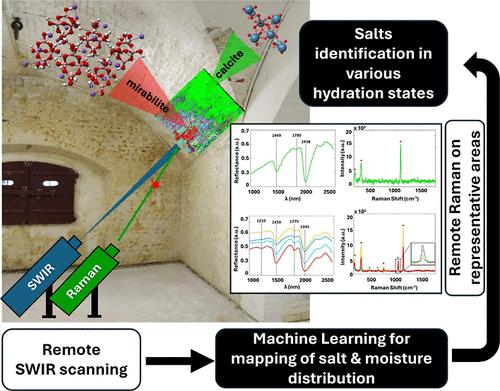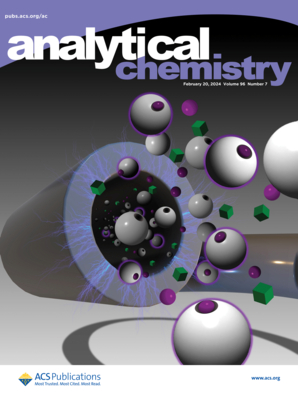Ground-Based Remote Sensing and Machine Learning for in Situ and Noninvasive Monitoring and Identification of Salts and Moisture in Historic Buildings
IF 6.7
1区 化学
Q1 CHEMISTRY, ANALYTICAL
引用次数: 0
Abstract
Historical buildings are prone to deterioration due to moisture and salt activity. Salt weathering affects the appearance of monuments, resulting in mechanical degradation. Many laboratory-based studies have been performed focusing on understanding salt formation in building materials and the resulting damage mechanisms. However, large-scale in situ monitoring is necessary to understand salt activity in realistic situations. Here, we present a novel methodology for in situ and noninvasive identification and monitoring of moisture and salts, following a complementary remote sensing approach. The study is based on ground-based remote short-wave infrared (SWIR) spectral imaging and remote Raman spectroscopy at stand-off distances of order 10 m. SWIR spectral imaging was used for scanning large wall surfaces at high resolutions (angular resolution of 45 μrad), which gave spatial distributions of moisture and salts in their various hydration states, visualized using an artificial neural-network based spectral clustering method. Remote Raman spectroscopy in each cluster area confirmed the identification of the salts.

求助全文
约1分钟内获得全文
求助全文
来源期刊

Analytical Chemistry
化学-分析化学
CiteScore
12.10
自引率
12.20%
发文量
1949
审稿时长
1.4 months
期刊介绍:
Analytical Chemistry, a peer-reviewed research journal, focuses on disseminating new and original knowledge across all branches of analytical chemistry. Fundamental articles may explore general principles of chemical measurement science and need not directly address existing or potential analytical methodology. They can be entirely theoretical or report experimental results. Contributions may cover various phases of analytical operations, including sampling, bioanalysis, electrochemistry, mass spectrometry, microscale and nanoscale systems, environmental analysis, separations, spectroscopy, chemical reactions and selectivity, instrumentation, imaging, surface analysis, and data processing. Papers discussing known analytical methods should present a significant, original application of the method, a notable improvement, or results on an important analyte.
 求助内容:
求助内容: 应助结果提醒方式:
应助结果提醒方式:


